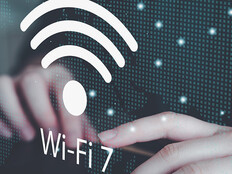The next generation of Wi-Fi is on the horizon, with big implications for healthcare providers. It’s designed for the type of high-density environments found in hospitals and clinics — such as waiting rooms and ICUs — that can put on a strain on current networks. Here’s what you need to know:
MORE FROM HEALTHTECH: Learn about the many ways that 5G technology is changing healthcare delivery.
Wi-Fi 6 Is Designed for High-Density Environments
Wi-Fi 6 is the Wi-Fi Alliance’s name for the IEEE 802.11ax wireless networking standard, the next generation after 802.11ac, or Wi-Fi 5. Wi-Fi 6 isn’t just a step up in speed from Wi-Fi 5. It also boosts performance in densely populated areas, lowers battery consumption and reduces latency.
Compatible Products Are Appearing in the Market
The standard isn’t yet fully approved, but every major Wi-Fi infrastructure vendor has announced products. On the client side, the Samsung Galaxy S10 cellphone and the Apple iPhone 11 family of devices are the first to support it. Laptops based on Intel Ice Lake and Comet Lake processors should be firmware-upgradeable to support 802.11ax.
Wi-Fi 6 Improves on Both Performance and Security
Older devices should work fine on Wi-Fi 6 networks, but new clients will display the updated standard’s advantages. The biggest jump will be in high-density spaces, but these features require Wi-Fi 6 clients and access points. Wi-Fi 6 also supports the new WPA3 encryption and authentication protocol, which gives stronger security to any client with modern firmware.


Wi-Fi 6 and 5G Complement Each Other
The two standards are complementary, with Wi-Fi ideal for indoor areas and 5G the standard of choice for outdoor networks. Wi-Fi 6, with higher speed and density, extends the usefulness of Wi-Fi as a faster, better and cheaper alternative to cellular data, even at the very high speeds proposed for 5G networks. Wi-Fi 6 also opens up more frequencies, subject to regulatory approval in each country.
Design a Phased-In Approach to Wi-Fi 6 Upgrades
A full Wi-Fi 6 deployment will mean swapping out APs, clients and network infrastructure because a 1-gigabit link isn’t fast enough to feed a high-speed, high-density Wi-Fi 6 AP. IT managers should plan a gradual upgrade path, making sure that anything they add to their networks can support Wi-Fi 6.
izusek/Getty Images











